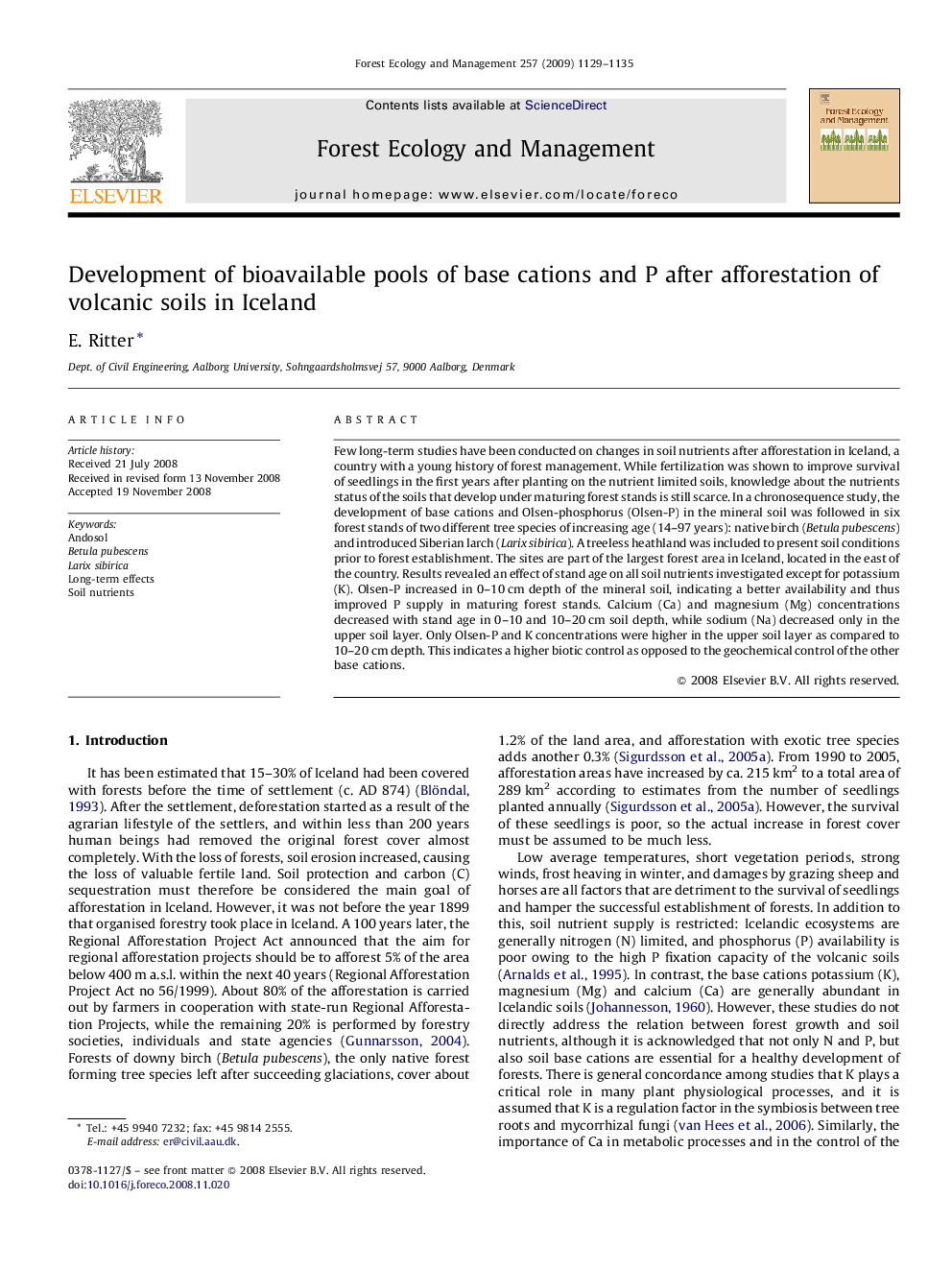| Article ID | Journal | Published Year | Pages | File Type |
|---|---|---|---|---|
| 89122 | Forest Ecology and Management | 2009 | 7 Pages |
Few long-term studies have been conducted on changes in soil nutrients after afforestation in Iceland, a country with a young history of forest management. While fertilization was shown to improve survival of seedlings in the first years after planting on the nutrient limited soils, knowledge about the nutrients status of the soils that develop under maturing forest stands is still scarce. In a chronosequence study, the development of base cations and Olsen-phosphorus (Olsen-P) in the mineral soil was followed in six forest stands of two different tree species of increasing age (14–97 years): native birch (Betula pubescens) and introduced Siberian larch (Larix sibirica). A treeless heathland was included to present soil conditions prior to forest establishment. The sites are part of the largest forest area in Iceland, located in the east of the country. Results revealed an effect of stand age on all soil nutrients investigated except for potassium (K). Olsen-P increased in 0–10 cm depth of the mineral soil, indicating a better availability and thus improved P supply in maturing forest stands. Calcium (Ca) and magnesium (Mg) concentrations decreased with stand age in 0–10 and 10–20 cm soil depth, while sodium (Na) decreased only in the upper soil layer. Only Olsen-P and K concentrations were higher in the upper soil layer as compared to 10–20 cm depth. This indicates a higher biotic control as opposed to the geochemical control of the other base cations.
